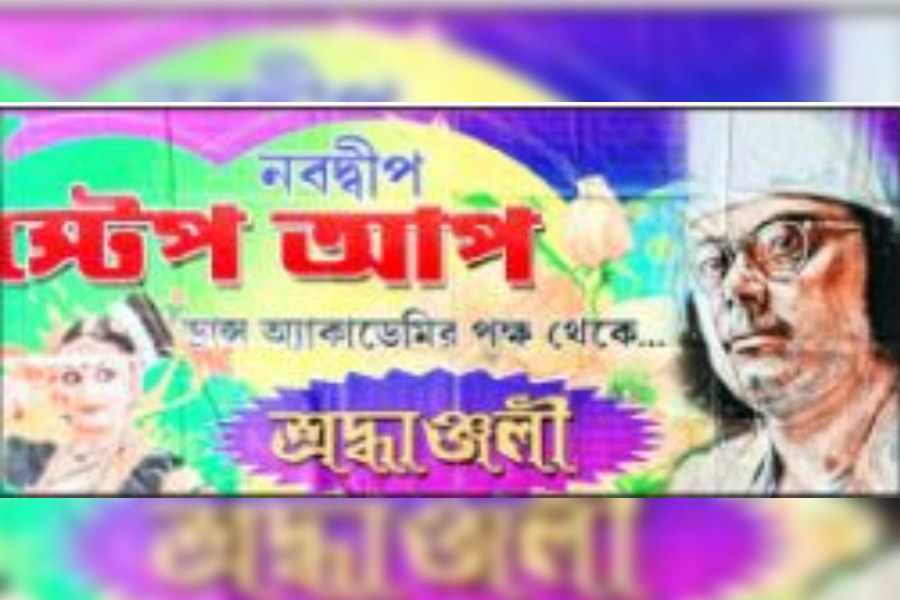Authorities of a Nabadwip-based Hindu temple have issued an unconditional apology after it was accused of forcing a dance institute to remove a picture of poet Kazi Nazrul Islam purportedly because he was Muslim.
Under pressure of increasing criticism from various quarters, the Radha Govinda Jiu temple authorities said it was a “mistake” that would not recur.
“We have hurt the sentiments of the residents of the town. We understood that Kazi Nazrul Islam was beyond any communal identity. We, therefore, issue an unconditional apology, and assure all that there will be no repetition of an episode such as this,” said the statement issued by the temple authorities on Tuesday.
The temple is of the Vaishnav denomination.
The Nabadwip Step up Dance Academy had rented the Naat Manch of the temple for a musical soiree to commemorate two of the foremost icons in south Asian literature, Rabindranath Tagore and Nazrul, on Monday and had banners printed with their pictures for the stage.
But minutes before the commencement of the programme, the temple authorities categorically told the organisers not to use a picture of a “non-Hindu”. They also allegedly directed the organisers against garlanding a photo of any such person – which they had plans for – in the temple premises.
With no time left, the organisers had to comply with the verbal order, and went ahead with the event without any banners or photos. The taking down of the banners made some in the audience curious, which led to them finding out what happened, following which there were posts on social media. Not long after, the incident caused a furore in the Nadia town.
Bandana Saha, principal of the dance academy, said they were preparing to display banners with pictures of the two greats as a tribute, when the diktat arrived as a rude shock.
“An official of the temple told me that any such banner with the picture of Nazrul couldn’t be allowed, since he belonged to a different religion. The official also strictly directed us not to garland his image in the temple premises. Mind you, they had no objection to Tagore,” she said.
“It was underscored, because Nazrul was Muslim,” she added.
Nazrul — the national poet of Bangladesh revered and fondly remembered by Bengalis around the world as the Bidrohi Kobi (Rebel Poet) — was a 19th century literary icon and Indian freedom fighter from Asansol’s Churulia.
“We tried our best to convince (the representative of the temple authorities) that Nazrul was a man beyond any religious identity because of his immeasurable contribution to Bengali literature, music, and culture that includes many devotional offerings in music for Hindu deities such as Krishna and Kali. But unfortunately, they remained rigid and we were compelled to oblige,” said Saha.
The insult to the legacy of Nazrul angered numerous residents of Nabadwip once the news spread.
Shyamasree Biswas Sengupta, an assistant professor with Kalyani University’s Bengali department, said: “Nazrul Islam was born in an orthodox Sunni Muslim family. But he was in real terms a pluralist and went beyond all religious barriers.”
“It is quite shocking to learn that a person who composed thousands of songs including Hindu religious devotional songs, including for Govinda (a name of Krishna, a foremost deity for Vaishnavs) was found objectionable at a Vaishnav temple,” she added.
Santiranjan Dev, secretary of Nabadwip Puratattva Parishad (Nabadwip Antiquities Council) said: “This took place in Nabadwip that has always taken pride in its association with Chaitanya Mahaprabhu and the Bhakti movement, which goes back six centuries.”
Mallika Dasi, the chief of the temple authorities, said it was a “wrong guess” on their part.
“We thought devotees might object to the picture of Nazrul Islam. But we guessed wrong,” she said.











